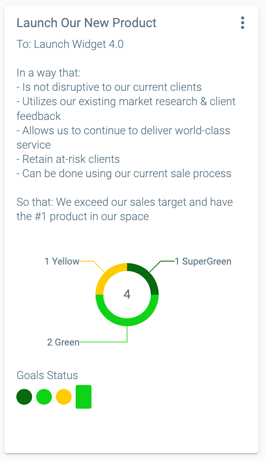We've all been there. We're part of a huge project at work that involves team members and departments from all over the company. The stakes are high, every meeting is expensive, all eyes are on the project, and failure is not an option. And, yet, somehow, deadlines are getting missed, everyone is waiting to be told what to do, and balls are dropping all over the place. It's frustrating, and it's costing you customers, investors, and good employees.
Here are 5 Simple Steps for Successful Cross-Functional Project Execution:
No 1. Get Aligned Around Your Strategy.
This helps all stakeholders see the "why" behind any project. Every large, cross-functional project can be traced back to your company's strategy (if it doesn't, you should ask why you're doing it!). The team has to be aligned around these three things:
- Who we are (Core Purpose, Core Values)
- Who we serve (Core Customer, Brand Promise, Sandbox)
- Where we are going (BHAG, Winning Moves, Annual Priorities)
No 2. Set Up a Plan Rhythm That Includes Cross-functional Projects
The best practice is a sequence of planning that starts with the executive team defining the Company's top 3-5 priorities for the quarter. During that process, if a cross-functional project is identified (i.e., launching a new product), that team should plan next. That team will involve team members from all over the organization - product, delivery, sales, marketing, etc. The team needs to make sure those priorities for the product launch make it into their departmental planning sessions, which happen next. Once all planning has been completed, plans should be reviewed and tested to ensure there are no conflicting priorities and that all dependencies are understood.
No 3. Clarify & Align the Cross-Functional Project Team
First, select the team that is going to work together on the project. It's usually not whole departments but rather a group of people with the right expertise and information to execute the project. One owner of the overall project should act as the lead, facilitate the planning session, and conduct the weekly working sessions (more to come!). Next, work as a team to create the Objective Statement - a clear, succinct, high-level statement of what the project is, how you are going to go about it, and what you are trying to accomplish. The value here is in the discussion, where team alignment begins.

No 4. Build Your Goal Dashboard
Once you have the Objective Statement, it is easy to write the high-level Priority in Rhythm that will act as the one source of truth on your project (start with a verb and be specific with your title! Hint: it's probably your "To:"). This is the Priority all the supporting priorities will link to, all attachments will live, and where the Comments stream will come to life.
Set Red Yellow Green success criteria together on that high-level priority.
Next, all stakeholders should write their supporting priorities and link them to the high-level priority. Have discussions, set due dates, and Red Yellow Greens together as you go. Again, alignment happens just by merely following the process of planning and writing goals together.
Finally, decide on 2-3 Key Performance Indicators (KPIs) or numbers that you can track that will let you know if the project is successful. For example, if we are launching a new product, we could track the revenue from new sales or the percentage of existing customers that buy the new product. You can pull all of your goals together in one Goal Dashboard, with the Objective Statement in the description field, to give everyone one central place to track progress.

No 5. Have Your Weekly Working Meeting.
This is completely different for those of you who are used to having Weekly Adjustment Meetings using Rhythm. You're still getting the team together for an hour a week; however, the purpose of a Weekly Working Meeting is to work on the project together, share learnings, celebrate victories, and troubleshoot stucks. The agenda is simple:
Welcome (5 minutes)
- This meeting will be successful if... (leader may already have this, or team may need to define)
- Victories from last week (popcorn style - not everyone talks)
Hot topics (25 minutes)
- Burning issues that have come up (may have some identified in advance)
- Identify key decisions & next steps
- Record Tasks if needed
Review Goal Dashboard (25 minutes)
- Discuss Yellow & Reds
- Record Action Plans to Green as Tasks (if needed)
Review Overdue Tasks (5 minutes)
- Stay accountable to discussions from previous weeks
As always with Rhythm, success depends on the team's strong habits around statusing their goals weekly and adding comments. This meeting only works if team members are statusing goals on a forecast, facing the brutal facts, and being vulnerable about stucks and roadblocks.

Together, through excellent alignment, consistent habits, and a shared commitment, your cross-functional team can become a relentless execution engine using the Rhythm solution!



